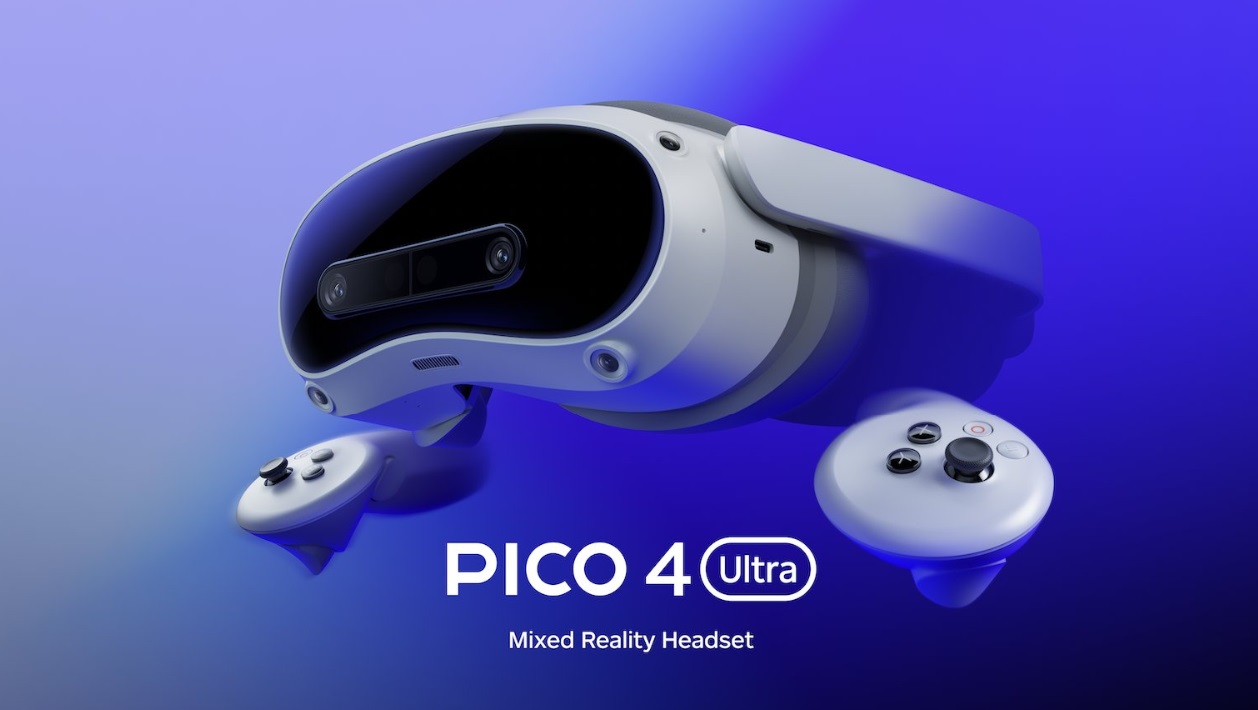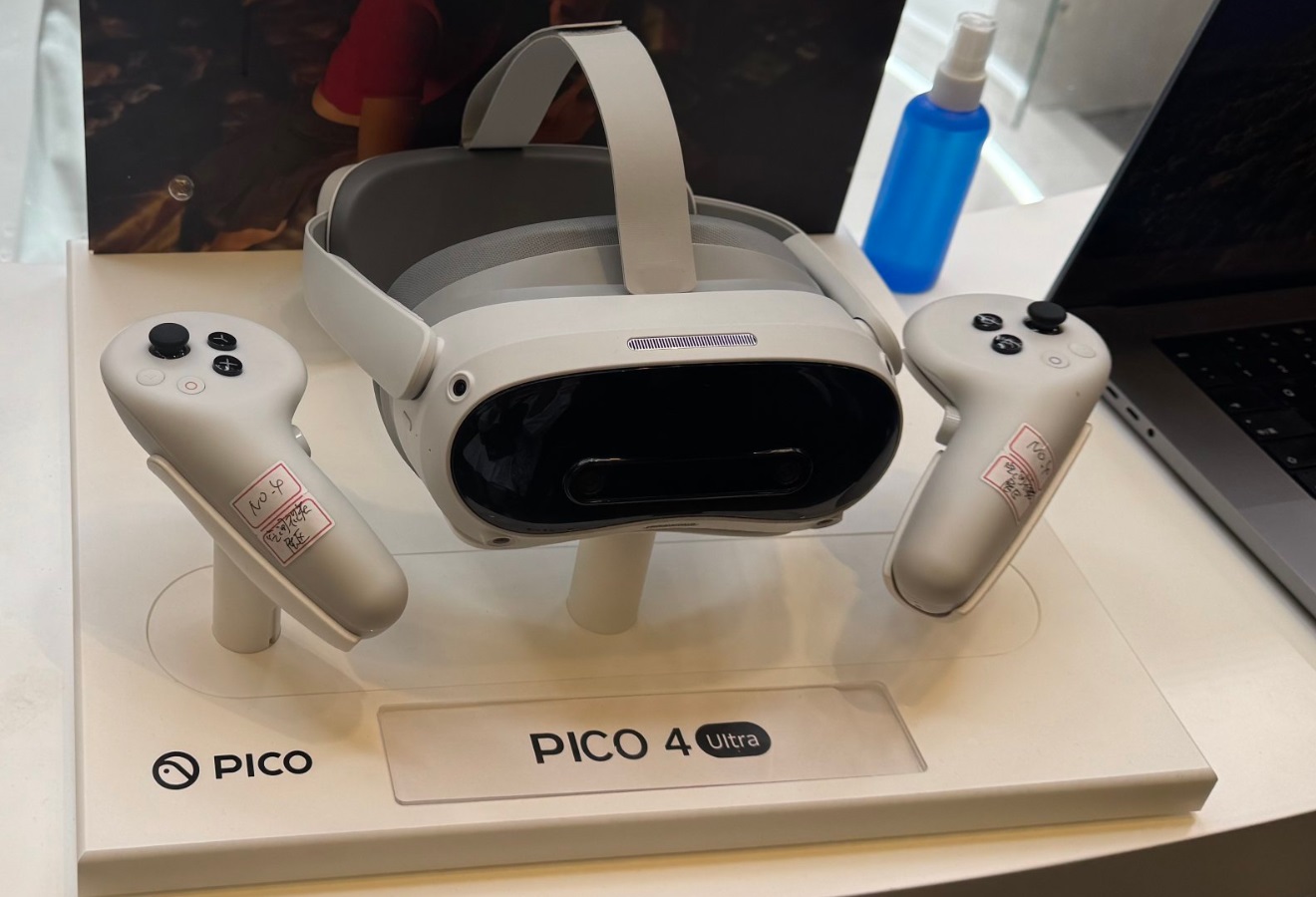The Pico 4 Ultra launched in China and showed a couple of specifications that champion what’s offered on the original Pico 4 headset. This new (higher) variant came with a larger battery—probably to power the additional accessories it supports—and supports up to 45W charging, which means it could go from 0% to 100% in roughly an hour.

Pico 4 Ultra looks pretty much like the original Pico 4 and supports WiFi 7—literally, the first VR headset to support this WiFi version. There are a couple of aspects where the Pico 4 Ultra’s specs beat that of the Quest 3, but it doesn’t have an adjustable eye relief feature as on the Quest 3. ByteDance is also releasing a 2D Android app store on PicoOS.
Pico 4 Ultra China Launch
The Pico 4 Ultra MR headset is designed to deliver an all-new mixed-reality experience that challenges the flexibility and satisfaction you could get from the Meta Quest 3. Well, not like the Pico 4 Ultra is a totally new model from ByteDance, it is simply an upgrade of the original Pico 4.
As expected, this Ultra variant comes with upgraded cameras, storage, RAM, chipset, battery, and a couple of other things, and according to the company, the Pico 4 Ultra display is 25% brighter than what the original version offers. However, the overall design looks pretty much like the original Pico 4.
On the Pico 4 Ultra, what you get is a pair of 32MP color pass-through cameras as opposed to the monocular sensor on the original version. Also, this variant is offering a 90Hz refresh rate at 2160×2160 PPE (Pixels Per Eye). It is powered by the rear-padded 21.9Wh battery, which powers the Snapdragon XR2 Gen 2 (4nm) paired to 12GB RAM; now, this is where it gets a bit better than the Quest 3 (which comes with 8GB of RAM paired to the Snapdragon XR2 Gen 2 (4nm) chip).
You’re getting 256GB of standard primary storage with this one in addition to the W-Fi 7 support. Apparently, the Pico 4 Ultra would offer a more stable streaming performance than most other MR headsets out there, but you must connect it with a Wi-Fi 7-supported router, and there are not many of them out there yet.
This MR headset also debuts a newer version of Pico OS, which the company claims to offer an all-new experience by allowing 360-degree views as well as allowing for multiple resizable windows to be open and operating simultaneously. Each window can be resized up to 280 inches. A Pico Connect app lets you mirror your device’s screen and display it on up to 3 screens simultaneously.
Specifications
| Pico 4 Ultra | Quest 3 | |
| Release Date | 2024 | 2023 |
| Field of View (FoV) | 105° × 105° | 110° × 96° |
| Pixels per eye | 2160×2160 | 2064×2208 |
| Eye Relief Adjustment | Not available | Available |
| Maximum Refresh Rate | 90Hz; | 120Hz |
| Chipset | Snapdragon XR2 Gen 2 (4 nm) | Snapdragon XR2 Gen 2 (4 nm) |
| RAM | 12GB LPDDR5 | 8GB |
| Memory | UFS 3.1, 256GB | 256GB/512GB |
| Operating System | Pico OS | Horizon OS |
| Passthrough | Binoculars (20.6 PPD) | Binocular (18 PPD) |
| Audio | Dual stereo speakers | Dual stereo speakers |
| Depth Sensing | Yes | Yes |
| Strap Type | Non-replaceable semi-rigid plastic | Replaceable flimsy cloth |
| Battery Location | Rear Padding | Visor |
| Battery Sizek | 21.9Wh | 18.9Wh |
| Charging Speed | 45W | 27W |
| Wi-Fi | 7 | 6E |
| Spatial Video Capture | Yes | No |
 Full Features of the Pico 4 Ultra
Full Features of the Pico 4 Ultra
The Pico 4 Ultra inarguably comes with sultry features that would make you want to prefer it over the Meta Quest 3.
Design and Build
Design-wise, the Pico 4 Ultra is pretty much the same as the original Pico 4, just that the display is 25% clear, and the battery on this one is bigger. You can instantly see the Pico 4 Ultra’s new front sensor suite, along with the colorful passthrough cameras and a time-of-flight depth sensor. The overall design is sleek and appealing with the clean white finish!
Battery and Controllers
The Pico 4 Ultra comes with a 21.9Wh battery, and while this does not necessarily mean it will last longer than the original Pico 4, the big battery would certainly cater to the more load the Pico 4 Ultra has to handle. Also, this battery supports 45W charging, which is more than 2x what the Pico 4 supports (20W), so the Ultra variant charges faster.
There’s a slight change in the controllers for this new variant; instead of the Pico 4’s unique arc controllers, the Pico 4 Ultra came with all-new ringless controllers that are pretty much lighter, even. These new controllers appear to be similar to Quest 3’s Touch Plus controllers, just that they don’t have those “very” curved handles and they are larger too. The controllers are very responsive.
Audio and Video Options
The Pico 4 Ultra comes with dual stereo speakers and 2x32MP cameras for high-quality colorful passthrough with low distortion, although the cameras are sampled at 8MP and 20.6 PPD (per-pixel display) because the system supports “pixels binding,” whereby it combines each block of four pixels into one. Also, you’re getting mixed-reality frame alignment at 72 Hz, while the maximum refresh rate supported is 90 Hz.
The color cameras are for 3D video capture, up to 2048×1536 at 60 FPS, and ByteDance mentions that the Pico 4 Ultra can inherently decode Apple spatial videos captured using the Vision Pro headset or iPhones. Sitting between the cameras in the front of the Pico 4 Ultra is what ByteDance describes as a time-of-flight sensor for 3D environment meshing—serving a similar purpose to Meta’s Quest 3 depth projector.
Pico Connect and PanoScreen Workspace
Some interesting features of the Pico 4 Ultra are the PanoScreen Workspace and the all-new PICO OS, which allows users to enjoy a 360-degree screen view while also working on multiple windows simultaneously. Plus, each opened window can be resized up to 280 inches, and you can mirror your devices: MacBook, Windows PC, iOS, or Android phone via the PICO Connect app.
Pico 4 Ultra supports ByteDance’s proprietary environment perception algorithm, which allows for real-time mapping of your environment and objects, to deliver an outstanding mixed-reality experience. There is an “immersive mode” to delve into more hyper-realistic virtual environments, and you can explore with the “AI-generated Environment” feature too.
More so, the PanoScreen workspace supports inputs from external keyboards and mice, controllers, or hands, allowing you to easily switch between input methods, depending on which is suitable for you at each moment.
Streaming and Gaming
Power by Pico OS, the Pico 4 Ultra comes with an app store where you can download immersive games and apps to explore mixed-reality worlds. Being the first MR headset to support the new Wi-Fi 7 standard, streaming and gaming with this headset will be much more stable and seamless.
The WiFi 7 support requires a Wi-Fi 7 router, and you can enjoy transmission speeds up to 3.0 Gbps or even higher, with wireless streaming latency being as low as 5 milliseconds. Additionally, Pico 4 Ultra supports more video codecs and decoding for PC streaming.
What More?
There is an add-on Pico Motion Tracker strap you can wrap around your foot to track your movements. The motion tracker strap weighs just 25g, is pretty light, and is flexible; you can comfortably have it on for as long as required; it automatically pairs with the headset when turned on.
Ultimately, the Pico 4 Ultra is open for preorders in China, with deliveries to start around 2nd September. The preorder price in China is ¥4300, which is around US$600. This MR headset is a decent alternative to the Meta Quest 3 and comes with slightly better specifications and features.

 Full Features of the Pico 4 Ultra
Full Features of the Pico 4 Ultra